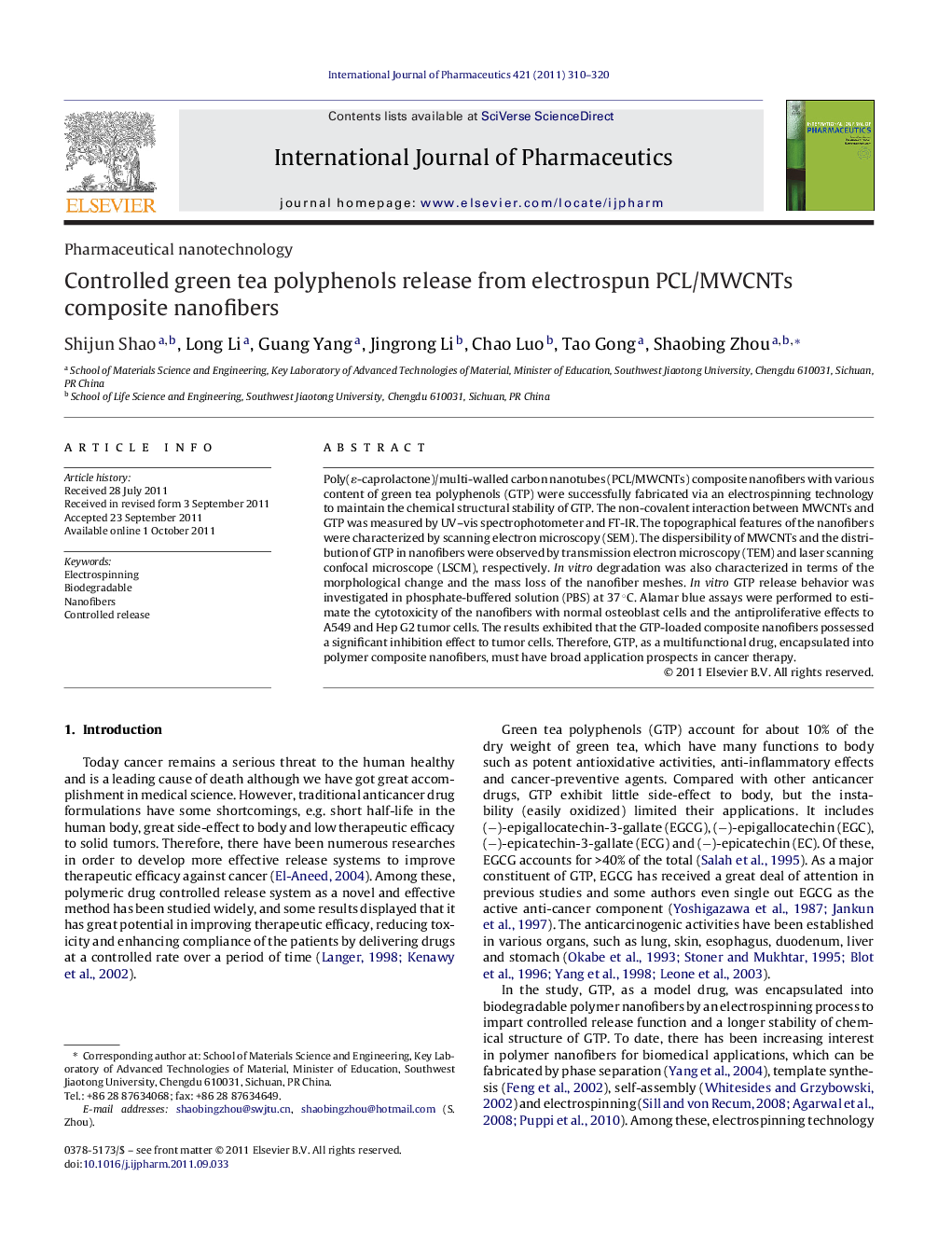| Article ID | Journal | Published Year | Pages | File Type |
|---|---|---|---|---|
| 5821195 | International Journal of Pharmaceutics | 2011 | 11 Pages |
Abstract
Poly(É-caprolactone)/multi-walled carbon nanotubes (PCL/MWCNTs) composite nanofibers with various content of green tea polyphenols (GTP) were successfully fabricated via an electrospinning technology to maintain the chemical structural stability of GTP. The non-covalent interaction between MWCNTs and GTP was measured by UV-vis spectrophotometer and FT-IR. The topographical features of the nanofibers were characterized by scanning electron microscopy (SEM). The dispersibility of MWCNTs and the distribution of GTP in nanofibers were observed by transmission electron microscopy (TEM) and laser scanning confocal microscope (LSCM), respectively. In vitro degradation was also characterized in terms of the morphological change and the mass loss of the nanofiber meshes. In vitro GTP release behavior was investigated in phosphate-buffered solution (PBS) at 37 °C. Alamar blue assays were performed to estimate the cytotoxicity of the nanofibers with normal osteoblast cells and the antiproliferative effects to A549 and Hep G2 tumor cells. The results exhibited that the GTP-loaded composite nanofibers possessed a significant inhibition effect to tumor cells. Therefore, GTP, as a multifunctional drug, encapsulated into polymer composite nanofibers, must have broad application prospects in cancer therapy.
Related Topics
Health Sciences
Pharmacology, Toxicology and Pharmaceutical Science
Pharmaceutical Science
Authors
Shijun Shao, Long Li, Guang Yang, Jingrong Li, Chao Luo, Tao Gong, Shaobing Zhou,
